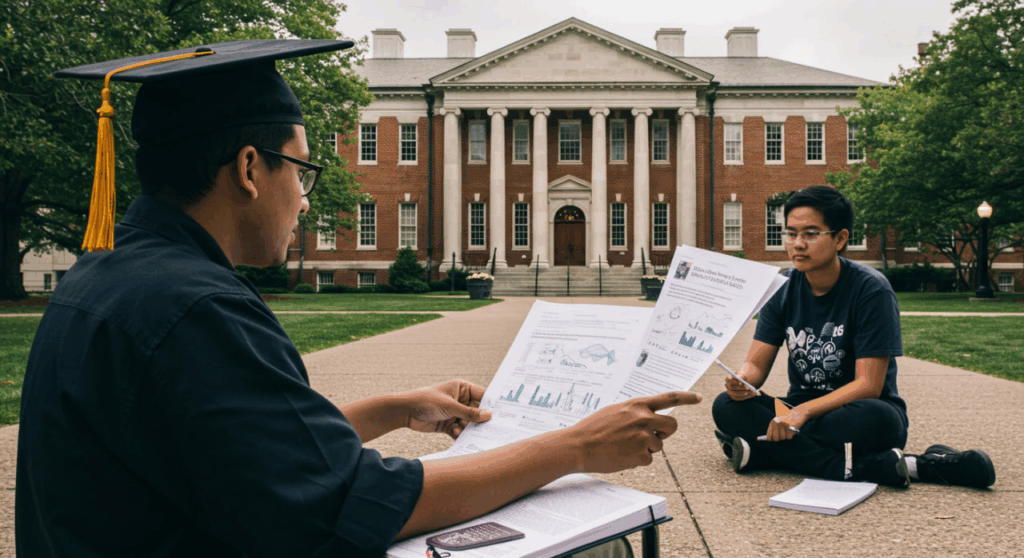The landscape of higher education in the United States is undergoing a seismic shift. As technology advances, societal needs evolve, and economic pressures mount, American universities are at a crossroads. The traditional model of higher education—rooted in lecture halls, ivy-covered buildings, and four-year degrees—is being challenged by new realities. From the rise of online learning to the demand for workforce-ready skills, universities must adapt to remain relevant. This article explores the key trends shaping the future of American universities, the challenges they face, and the innovative solutions emerging to meet the needs of a rapidly changing world.
The Forces Driving Change in Higher Education
Technological Advancements Reshaping Learning
Technology is revolutionizing how education is delivered and consumed. Online learning platforms, such as Coursera and edX, have democratized access to high-quality courses, enabling students to learn from top institutions without the need to set foot on campus. The integration of artificial intelligence (AI) in education is personalizing learning experiences, enabling adaptive curricula that cater to the individual needs of students. Virtual reality (VR) and augmented reality (AR) are creating immersive learning environments that simulate real-world scenarios for fields such as medicine and engineering. These innovations are prompting universities to reassess traditional classroom models and invest in digital infrastructure to remain competitive.
Shifting Workforce Demands
The modern workforce demands skills that evolve more rapidly than traditional degree programs can accommodate. Employers increasingly value practical, job-ready skills over broad academic knowledge. Fields such as data science, cybersecurity, and renewable energy are proliferating, yet many universities struggle to update their curricula quickly enough. To address this, institutions are partnering with industries to offer microcredentials, certifications, and boot camps that focus on specific skills. These shorter, targeted programs are gaining traction as alternatives to traditional degrees, offering students faster paths to employment and universities new revenue streams.
Rising Costs and Accessibility Challenges
The cost of higher education in the U.S. has skyrocketed, with tuition at some private institutions exceeding $60,000 per year. This has led to a student debt crisis, with over $1.7 trillion in outstanding loans affecting millions of Americans. As a result, prospective students are questioning the return on investment (ROI) of a college degree. Universities are under pressure to justify their value proposition by offering affordable pathways, such as income-share agreements or expanded scholarship programs. Additionally, the push for inclusivity has prompted institutions to address accessibility barriers, ensuring education is equitable for underrepresented groups.

Challenges Facing American Universities
Balancing Tradition with Innovation
Universities are steeped in tradition, from tenured faculty to centuries-old campus rituals. While this heritage fosters a sense of community, it can hinder adaptation to modern demands. Faculty resistance to online teaching, bureaucratic red tape, and outdated governance structures often slow the pace of change. Institutions must find ways to honor their legacy while embracing innovation, whether through hybrid learning models or interdisciplinary programs that break down academic silos.
Competition from Alternative Education Providers
The rise of alternative education providers is challenging the dominance of traditional universities. Companies like Google and IBM offer professional certifications that rival degrees in fields like IT and project management. Coding boot camps and online platforms provide affordable and flexible options for skill development. To compete, universities must differentiate themselves by emphasizing critical thinking, research opportunities, and the holistic campus experience that alternative providers cannot replicate.
Addressing Mental Health and Student Well-Being
The mental health crisis among college students is a growing concern. Studies show that over 40% of students report experiencing anxiety or depression, exacerbated by academic pressures and social isolation during the pandemic. Universities are investing in mental health resources, including on-campus counseling and wellness programs, to support their students. However, scaling these services to meet demand remains a challenge, particularly for underfunded public institutions.
Innovative Solutions for the Future
Embracing Hybrid and Flexible Learning Models
The future of higher education lies in flexibility. Hybrid learning models, which combine in-person and online instruction, offer students the best of both worlds: the engagement of face-to-face interaction and the convenience of digital access. Universities like Arizona State University have pioneered scalable online programs that maintain academic rigor while reaching a global audience. Flexible degree pathways, such as stackable credentials, enable students to earn certifications along the way to a full degree, accommodating diverse schedules and career goals.
Fostering Lifelong Learning
The concept of education as a one-time event is becoming obsolete. As careers span decades and industries evolve, professionals require continuous upskilling. Universities are responding by offering lifelong learning programs, such as alumni access to online courses or executive education. These initiatives position universities as partners in career development, fostering long-term relationships with both graduates and employers.
Leveraging Data for Student Success
Data analytics is revolutionizing the way universities support their students. By analyzing academic performance, engagement, and retention data, institutions can identify students at risk and intervene early. Predictive models enable advisors to tailor support, such as recommending effective study strategies or connecting students with tutoring services. Universities like Georgia State have employed data-driven approaches to enhance graduation rates, particularly for first-generation and low-income students, establishing a model for others to follow.
The Role of Universities in a Globalized World
Preparing Students for a Global Economy
In an increasingly interconnected world, universities must prepare students for global challenges. This entails fostering cultural competency, encouraging study abroad programs, and integrating global perspectives into their curricula. Partnerships with international institutions can facilitate cross-border research and exchange programs, equipping students with the skills necessary to navigate a diverse and globalized workforce.
Leading in Research and Innovation
American universities have long been global leaders in research, driving breakthroughs in medicine, technology, and sustainability. To maintain this edge, institutions must invest in interdisciplinary research centers that address pressing issues such as climate change and public health. Collaboration with private sectors and government agencies can amplify their impact, ensuring universities remain at the forefront of innovation.
Conclusion
The future of American universities hinges on their ability to adapt to a rapidly changing world. By embracing technology, aligning with workforce needs, and prioritizing accessibility, institutions can redefine their role in society. The challenges are significant, but so are the opportunities. Universities that innovate while staying true to their mission of fostering knowledge and critical thinking will not only survive but thrive. As they navigate this transformative era, American universities have the chance to shape a future where education is more inclusive, flexible, and impactful than ever before.
FAQs
What is driving the changes in American universities?
Technological advancements, shifting workforce demands, and rising costs are key drivers of change. Online learning, AI, and industry partnerships are transforming the way education is delivered, while economic pressures prompt universities to offer affordable, skill-focused programs.
How are universities addressing the student debt crisis?
Many institutions are exploring income-share agreements, expanding scholarships, and offering low-cost online programs. Micro-credentials and certifications provide affordable alternatives to traditional degrees.
What role does technology play in the future of higher education?
Technology enables personalized learning, virtual simulations, and global access to education. Tools like AI, VR, and data analytics enhance teaching, improve student outcomes, and make education more accessible and practical.
How can universities compete with alternative education providers?
Universities can differentiate themselves by emphasizing critical thinking, research opportunities, and the campus experience. Offering flexible, industry-aligned programs also helps them stay competitive.
Why is mental health a priority for universities?
With rising rates of anxiety and depression among students, universities are investing in counseling, wellness programs, and peer support to create a healthier campus environment and improve student success.



